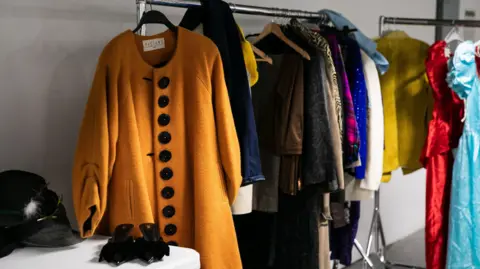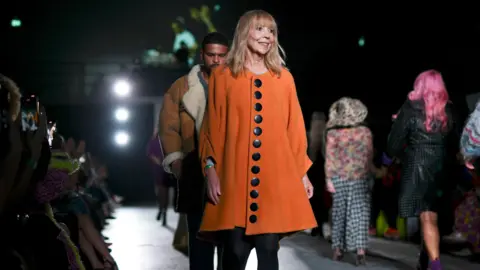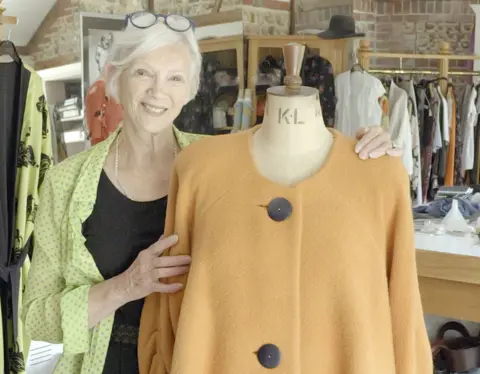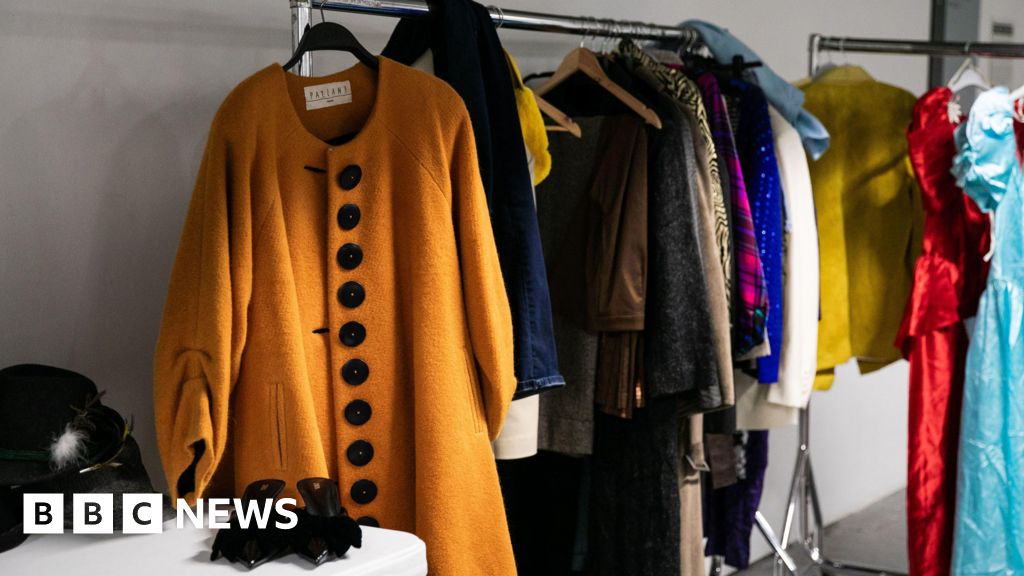 PA
PAA British fashion designer says she is “over the moon” that one of her long-lost designs was found in an Oxfam charity shop nearly 40 years after it went missing from the designer’s warehouse.
When Jean Pallant was told her one-of-a-kind coat had turned up in a donation bag at the Oxfam shop in Mill Hill, London, she was “very excited”.
Shop manager Marina Ikey-Botchway said she could tell the coat was a priceless item when the donation came in.
She made the discovery among a donation of high street fast-fashion clothes.
‘It’s like seeing a child’
“The very first second I saw the coat I knew this was something special, so I checked the label and after a quick Google found Jean’s email,” Ms Ikey-Botchway said.
On finding out about the discovery, the designer said she was “absolutely over the moon, really”.
“It was very sweet of the person who discovered it to believe that it was something important,” Ms Pallant said. “It’s like seeing a child. It’s lovely.
“I know every single square inch of it, and I’m absolutely amazed that it looks so new, and it feels new. Everything about it looks exactly as it did when it went missing.”
Ms Pallant, who was “part of the cultural revolution of Britain” starting in the 1960s and one half of a husband-and-wife team, made the orange coat with large buttons on her kitchen table in 1988 and it featured in a Sunday Telegraph article that year.
 PA
PAWhen she went to retrieve some pieces from her warehouse nearly four decades ago, she felt “sick” to discover that the coat had gone missing along with five other pieces she had designed with her husband Martin, who died recently.
“They’re all my babies” she said. “These pieces were missing, and there’s nothing I can do about it.”
Now that the coat has been found, Ms Pallant said it was “extraordinary” the item looked “absolutely brand new”.
“It doesn’t look as if it’s ever been worn, so I’m thrilled about that as well. It doesn’t look like a rag.
“It doesn’t even smell of must, which is weird. I don’t know where it’s been for those years, but it’s obviously been well cared for,” she said.
Other missing pieces
The coat was recently chosen by 1960s fashion model Penelope Tree to walk in Oxfam’s Style for Change fashion show, in partnership with Vinted, as part of its Second Hand September campaign.
Reuniting with her long-lost coat has renewed hope for Ms Pallant that she may still find her other missing pieces.
She said: “I’d love those to turn up. There are some really special pieces that I’d like back in our collection for our archive. Maybe they’ll turn up, who knows?
“One of them was a piece which is so important to us, which was made in 1972 I think. It was worn by me in a TV fashion show to celebrate Britain joining the common market and it was a beautiful white jumpsuit and jacket with little mink spots on it.”
 PA
PAShe added: “I’d pay anything to get it back.”
Ms Pallant is currently restoring and curating a Pallant collection to give to the V&A Museum in London.
She said: “I think it’s very important that this collection is in the V&A since we were part of the group of designers, which were part of the cultural revolution of Britain, the generation that made a difference in the 60s, 70s and 80s.
“I want our collection to be there with the other names that you will be familiar with of that era, which are names like Jean Muir or Ossie Clark or Bill Gibb or Zandra Rhodes, all of those British designers who started in the same era that we did.”


